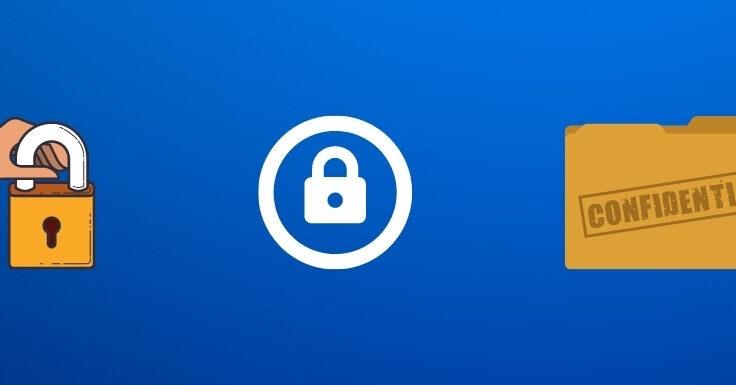In the digital age, you’re constantly generating and dealing with data. Some of it is trivial, but some, known as sensitive data, carries significant importance. This could be data related to your personal identity, financial transactions, or health records. The challenge lies in identifying and tracking this sensitive data. It’s a daunting task, but not impossible. You need to understand what information is sensitive and why it needs protection. Using automated sensitive data discovery tools can also help you along the way.
The Challenge of Data Visibility
The importance of protecting sensitive data cannot be emphasized enough. It’s not just about complying with various data protection regulations. It also helps you maintain your reputation, build trust with your clients, and prevent potential financial losses. A data breach can lead to devastating consequences, including penalties, loss of customer trust, and financial losses.
The challenge is that sensitive data is often scattered across various platforms and systems. It could be in your emails, in your physical files, on your computer, or in the cloud. Tracking such data, especially in large volumes, can be complex and time-consuming. But with a strategic approach and the right tools, it becomes manageable.
Key Types of Sensitive Data
Sensitive data refers to any information that must be protected from unauthorized access to safeguard the privacy or security of an individual or organization. In August 2023 alone, there were 73 security breaches that were publicly revealed, resulting in the exposure of more than 79 million data records.
But what are the different types of sensitive data?
Personal data extends beyond mere contact info. It’s any data that can directly or indirectly identify an individual. This includes names, addresses, and digital data like IP addresses or cookies. Special category data, a more sensitive type, includes health info, genetic or biometric data, racial or ethnic origin, political views, religious beliefs, and sexual orientation.
Financial data refers to the monetary specifics of an individual. It includes bank details, credit card numbers, tax reports, and financial statements. With the rise of digital transactions, it also covers digital wallets and cryptocurrency info. In the wrong hands, this information can be used for fraud or identity theft, emphasizing the importance of its safeguarding.
Business-specific data, including trade secrets, proprietary information, and customer data, is vital for any company. Breaches can damage brand reputation and cause substantial financial losses. This data includes digital assets like websites, databases, and software codes, often targeted by cybercriminals for sabotage, ransom, or espionage.
Finding Your Sensitive Data
Once you know what sensitive data is, the next step is to find and catalog it. This is easier said than done. Sensitive data can be found across various data stores, from structured databases to unstructured files in cloud storage or on-premises servers. It may also reside in emails, documents, spreadsheets, and physical files. Cataloging this data involves building a comprehensive inventory of every piece of sensitive data, its location, its owner, and how it’s being used. This catalog becomes a critical tool for managing and protecting sensitive data.
The sheer volume and complexity of data within a modern organization make it nearly impossible to seek out sensitive data manually. This is where automated data discovery tools come into play. These smart tools scour through an organization’s systems, using algorithms and pattern recognition to identify and catalog sensitive data. By automating the process, organizations save time and resources and greatly reduce the risk of human error, thereby enhancing overall data security.
Here are some automated data discovery tools you can consider to safeguard your data:
- Tableau: This powerful data visualization tool helps businesses identify and analyze sensitive data quickly and precisely. It provides dashboards and interactive visualizations that can simplify complex data sets and reveal insights.
- QlikView: This tool enables users to explore and analyze data from multiple sources. It’s an excellent choice for businesses that need to find and categorize sensitive data across various platforms.
- Talend: Providing a unified platform for data integration, Talend helps organizations find and manage sensitive data. It allows users to map out, identify, and classify data, ensuring comprehensive data security.
- SAS Visual Analytics: This tool offers an interactive, visual exploration interface that aids in the discovery of sensitive data. It allows users to explore all data, execute analytic correlations, and view results with auto-charting.
- MicroStrategy: A tool that enables organizations to turn data into actionable insights. MicroStrategy offers powerful data discovery capabilities that can help find and manage sensitive data.
- Zoho Analytics: Zoho’s data discovery tool allows businesses to blend and transform data from a multitude of sources. This helps in identifying sensitive data and turning it into actionable insights.
- Alteryx: This tool offers an end-to-end analytics platform for data discovery. Alteryx provides data blending, predictive analysis, and data visualization features, making it easier to find sensitive data.
- SAP BusinessObjects: This is a business intelligence suite that provides flexible and scalable data discovery tools. SAP BusinessObjects helps explore any data from any source, turning it into meaningful information.
- PowerBI: Microsoft’s PowerBI is a suite of business analytics tools that offer insights throughout your organization. It links to numerous data providers, streamlines data preparation, and facilitates spontaneous data examination. PowerBI offers data visualization features that make it easy for users to identify and manage sensitive data.
Protecting sensitive data is not just a legal obligation; it’s crucial to maintaining trust and credibility in the digital world. By understanding what sensitive data is, where it’s located, and how to protect it, you can significantly reduce the risk of data breaches. By harnessing the power of automated data discover tools, you can fortify your data security strategies. For businesses and individuals, data protection is an ongoing process that requires continuous vigilance and adaptation to emerging threats. By implementing these systems and adhering to best practices, you can ensure that your sensitive data remains secure and well-protected.







